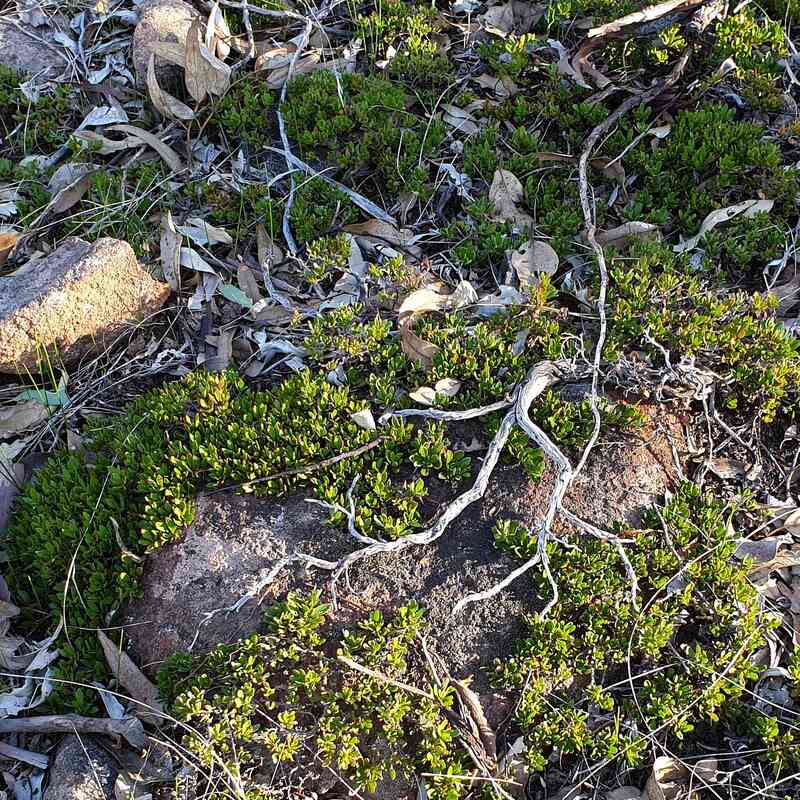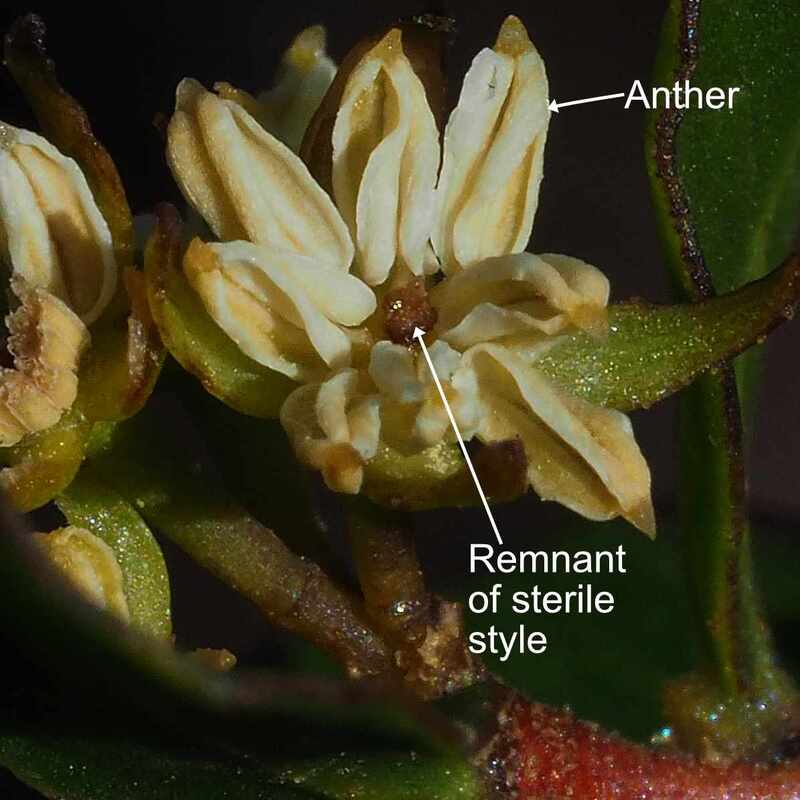A ‘dodonaea’ Google search yields pages of links/advertisements for sticky hopbush Dodonaea viscosa, which is one of the most widely dispersed plants in tropical/temperate parts of the world. It is a renowned hedge species and is full of bioactive substances developed by the species to repel insects. The plant, which originates from rangeland WA and further east was used by aboriginal people for pain relief and for shelters, because they retained their leaves.
Beer-deprived European settlers used it as a hop substitute to brew a bitter but acceptable beer. I wonder whether narcotic components gave the beer an extra kick?
I found an introduced plant of Dodonaea viscosa subspecies angustissima at Birdwhistle Rock.
I frequently see hop bushes as I wander through Narrogin reserves, particularly in stony and heavier soils, and as sole shrubs under tree or mallee canopy.
The plants may not be showy, but their fruit is a food source for the Regent Parrot. This interesting article describes a situation where they have become invasive due to an imbalance in the habitat.
 Bee stealng hop bushpollen
Bee stealng hop bushpollen Dodonaeas are dioecious (male and female), wind-pollinated plants with simple leaves. Flowers are small and insignificant. The female has a single pistil clasped by sepals. Male flowers look more like normal flowers because they have large, almost stalkless twisted anthers on top of a base of outstretched sepals. Anthers split open to allow pollen to blow away to female plants.
April 2023. Honeybees were furiously robbing pollen from Dodonaea pinifolia plants at Yilliminning Nature Reserve. Interestingly, they weren't bothering Dodonaeas at Foxes Lair.
From their location, I suspect that they tolerate dry conditions and are long-lived
Dodonaea humifusa is an attractive ground hugging plant which occurs mostly on rocky red clay soil on the Granite trail. I haven't noticed fruit on these plants.





















